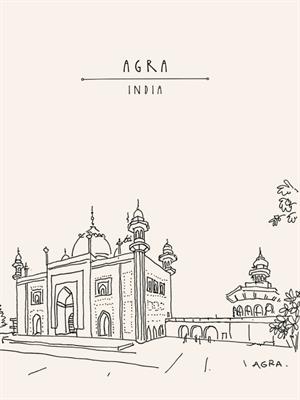
PUMPA - SMART LEARNING
எங்கள் ஆசிரியர்களுடன் 1-ஆன்-1 ஆலோசனை நேரத்தைப் பெறுங்கள். டாப்பர் ஆவதற்கு நாங்கள் பயிற்சி அளிப்போம்
Book Free DemoIntroduction:
The growth of civilisation in India has witnessed lofty changes in the livelihood and the lives of people. The prehistoric people settled along the banks of the river and created houses with primitive things for their protection and existence.
In later periods people started producing crops that they harvested and sold in the markets. These markets are the central place of business where people gather and buy what they require.
These markets are mostly located in towns that served as the fulcrum of development.
Indian towns are Urban settlements that existed even centuries before Industrialisation took place in India.
The towns of India are classified into three categories they are:

The Ancient Towns of India:
In ancient India, the towns are mostly located near the ports, the residence of kings and their forts. These are places with high people congregations where towns are created by the rulers.
These towns created by the kings serve numerous purposes like administration of the area, religious purposes like festivals, rituals and sacrifices were made in these towns.
Mohenjo Daro: The town of Mohenjo-Daro is considered the largest among the ancient towns. The name of the town means the “Mound of the Dead”.
Some of the important Indian ancient towns are Mohenjo-Daro, Dholavira, Harappa, Madurai, Calicut, and Allahabad, which gained prominence in history.
Medieval Towns of India:
The Medieval towns in India are towns constructed between the period of the \(\text{6th – 12th Century}\). Numerous kingdoms arose during the period post the second urbanisation, which took place in the \(6^{th}\) Century.

Agra
The rulers built fortified towns with defence systems and forts, which served as the capital of the ruler.
Vashtushastra: The text of Vashtushastra was written during the Vedic Age, which defines the principles of construction and design under which most of the medieval towns were built.
Jodhpur, Agra, Delhi, Jaipur, Nalanda, and Hyderabad are some of the important medieval towns of India.
The Towns of Modern India:
After the \(12^{th}\) Century, the northern parts of India were controlled by the Islamic rulers who gave magnanimous contributions in building new towns and architectural marvels.
The habit of constructing lofty structures and creating towns continues under the Mughals, the successors of the Delhi Sultanate.
The advent of the European witnessed the paradigm shift in the construction of town planning in India. They altered towns according to their economic significance.
During the British period, they established three new towns, namely Mumbai, Chennai, and Calcutta, which were port cities that enabled trade and export and served as important administrative regions of Peninsular India.